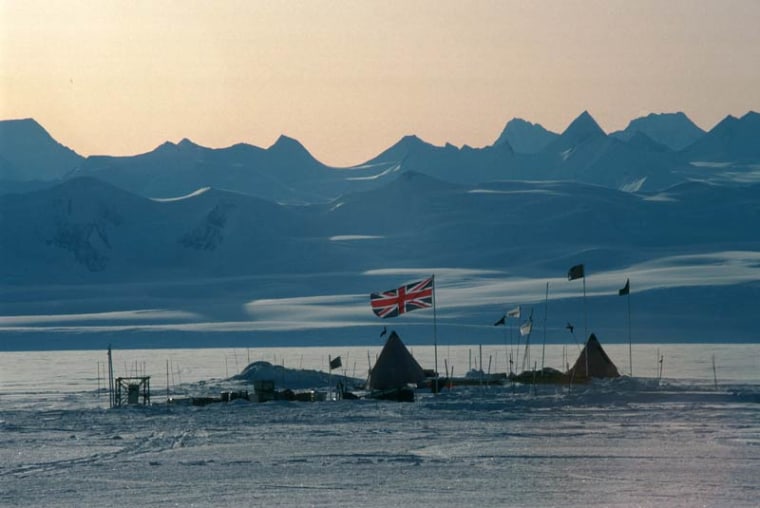Under the 2-mile-thick layer of ice on a desolate, remote plain in Antarctica lies a lake that has been buried for millennia. Scientists with the British Antarctic Survey are currently camped out above that lake, engaged in an effort, years in the making, to drill down and take water samples from the lake, to see if it holds any forms of life.
Lake Ellsworth is about 7 miles long, a mile wide and 500 feet deep (11 kilometers by 1.6 kilometers by 152 meters). Because the lake has been sealed off by a thick blanket of ice for up to 1 million years — before modern humans evolved — scientists think microbes or other forms of life in the water could have evolved in interesting ways to deal with an isolated environment away from sunlight.
The plan to drill into Lake Ellsworth involves a specially designed hot water drill that would bore through the ice and down to the fresh lake water, and then send 24 titanium canisters down through the borehole to take water samples. But the plan has hit a snag.
Technical difficulties
A circuit used in the main boiler that supplies hot water to the drill has burned out twice. The team is awaiting resupply while working to understand how to prevent the problem from happening again.
"We're experiencing some technical difficulties right now that is preventing us from continuing, at this moment, exploration of the subglacial lake that lies 3 kilometers beneath our feet," Martin Siegert, the lead investigator for the project and a glaciologist at the University of Bristol, said in a Dec. 17 video update on the project's blog.
Siegert noted that such difficulties are not unusual when working in Antarctica. "It's a very hostile environment; it's very difficult to do things smoothly," he said.
While the team is waiting for the new part, it's doing plenty of other science. This week the researchers have been walking a line 1 km to the northeast and southeast of their camp and taking samples of snow at regular intervals. The snow will be melted down and sampled to see what organisms dwell in the snow of the region. [ Extreme Antarctica: Amazing Photos of Lake Ellsworth ]
"When we get into the lake itself, we want to know that the things that we find in it have actually come from the lake, and not from either the drill fluid or the area around the site," explained David Pearce, one of the team's lead scientists, in a video update from Dec. 18.
Siegert said he hopes the team will be able to resume drilling by the end of the week and that the good news is that it has plenty of fuel to continue drilling with.
The harshness of the Antarctic environment and the complete darkness of winter mean that the team can be at the site only during the comparatively mild months of austral spring and summer, from November through January. And once the team breaches the lake, it will have 24 hours to take samples before the borehole freezes shut.
Finding microbes
Finding microbes in the frigid, dark waters of the lake could help scientists better understand the origins of life on our own planet and the potential environments in which it could arise on other planets. Even if no signs of life are found in the lake, that could inform science's understanding of the limits by which life is bound.
The team also hopes to take samples of mud from the bottom of the lake, to better understand the geological history of the West Antarctic Ice Sheet and Earth's past climate.
A group of Russian scientists is drilling down into the waters of Lake Vostok, the largest of Antarctica's buried lakes. The team reached the lake's waters during the last drilling season, on Feb. 5, but the few microbes it found in the retrieved samples were all contaminants from the drilling apparatus.
However, another group of scientists has found a thriving community of microbes in Lake Vida, another buried Antarctic lake that is thought to have been isolated from the rest of the world for about 2,800 years.
Reach Andrea Thompson at athompson@techmedianetwork.com and follow her on twitter . Follow OurAmazingPlanet on Twitter @OAPlanet. We're also on Facebook and Google+.
